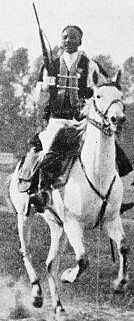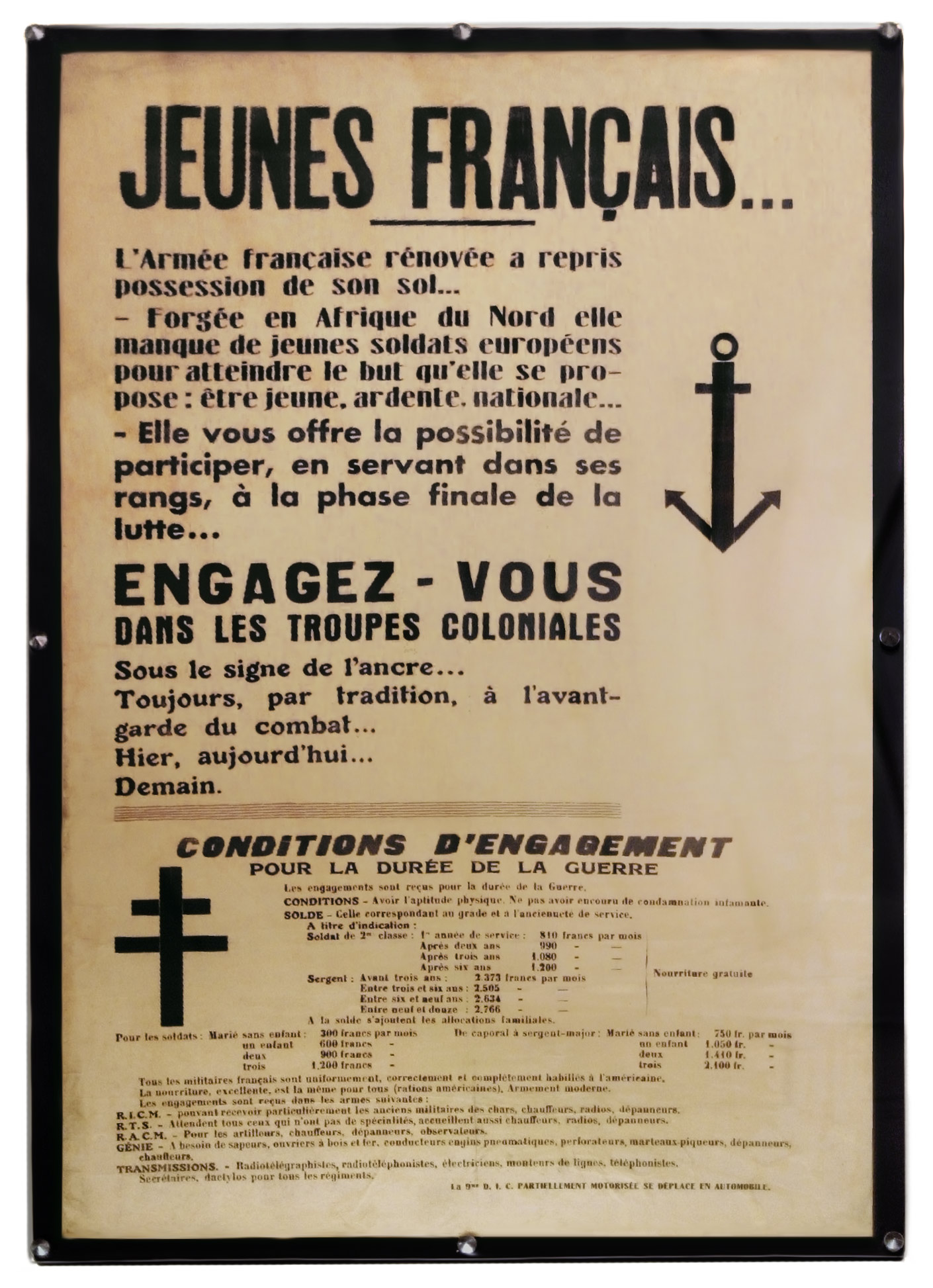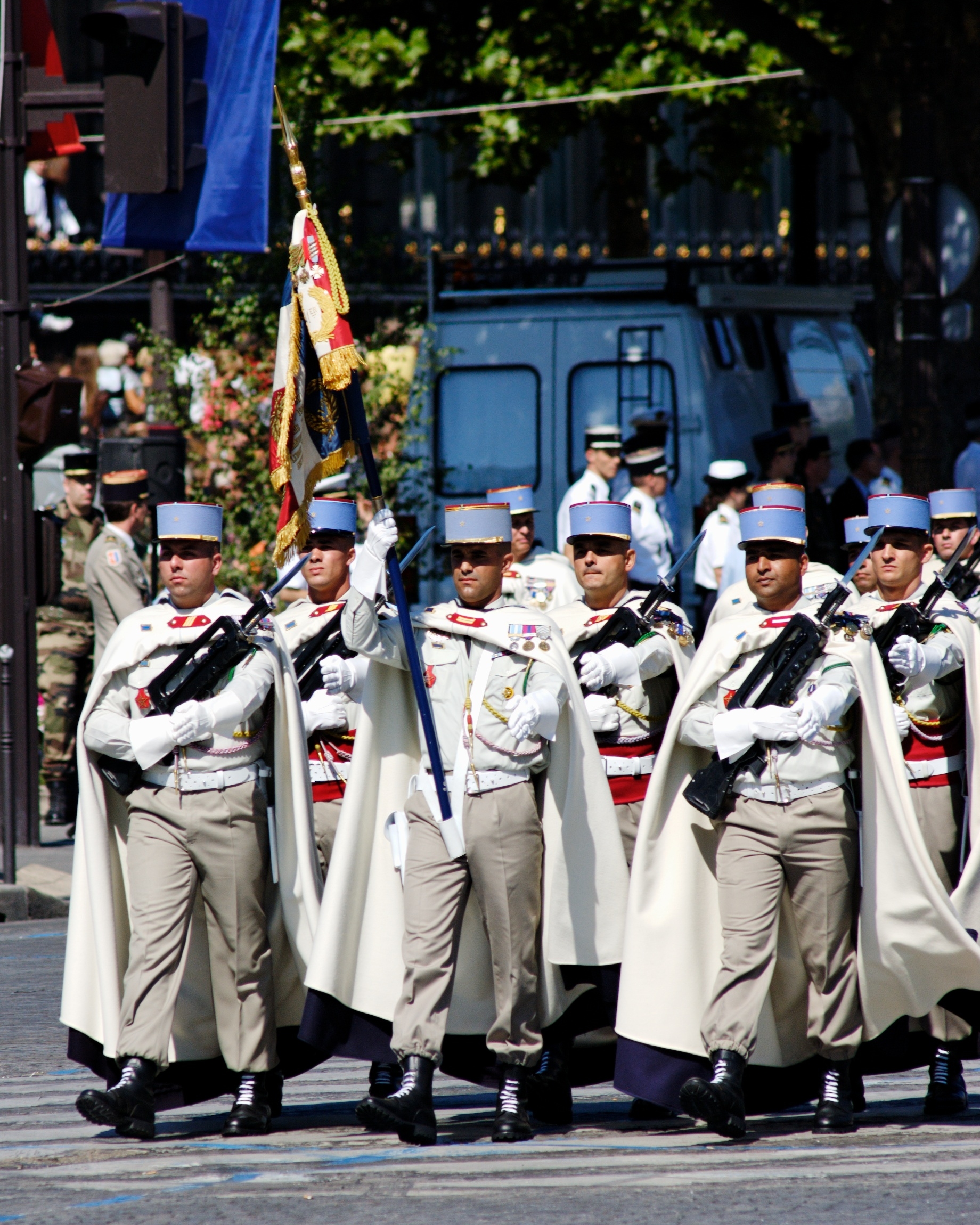|
Savari
Savari was the designation given to the regular Libyan cavalry regiments of the Italian colonial army in Tripolitania and Cyrenaica. The word "savari" was derived from a Persian term for "horsemen" ( Savārān). Organisation This cavalry force was recruited from the Arab-Berber population of what is now Libya, following the Italian occupation in 1911-12. The first Savari units were raised in December 1912, drawn from tribal irregulars or ''bande'' recruited by the Italians shortly after their occupation of Tripoli in October 1911. The officers of the fourteen squadrons (twelve designated as "regular line" and two as "command") comprising this corps were nearly all Italian. Their troopers and some of the non-commissioned officers were Berber and Arab volunteers, who had a long tradition of horsemanship. Seven line squadrons were recruited from Tripolitania and five from Cyrenica during the 1920s and 1930s. In 1929-30 the Tripolitanian units were reduced to two squadrons while i ... [...More Info...] [...Related Items...] OR: [Wikipedia] [Google] [Baidu] |
History Of Libya As Italian Colony
The Italian colonization of Libya began in 1911 and it lasted until 1943. The country, which was previously an Ottoman possession, was occupied by Italy in 1911 after the Italo-Turkish War, which resulted in the establishment of two colonies: Italian Tripolitania and Italian Cyrenaica. In 1934, the two colonies were merged into one colony which was named the colony of Italian Libya. In 1937, this colony was divided into four provinces, and in 1939, the coastal provinces became a part of metropolitan Italy. The colonization lasted until Libya's occupation by Allied forces in 1943, but it was not until the 1947 Paris Peace Treaty that Italy officially renounced all of its claims to Libya's territory. Italian Tripolitania and Cyrenaica (1911–1934) First years On 3 October 1911, Italy attacked Tripoli, claiming to be liberating the Ottoman wilayats from Istanbul's rule Despite a major revolt by the Arabs, the Ottoman sultan ceded Libya to the Italians by signing the ... [...More Info...] [...Related Items...] OR: [Wikipedia] [Google] [Baidu] |
Colonial Army
Colonial troops or colonial army refers to various military units recruited from, or used as garrison troops in, colonial territories. Colonial background Such colonies may lie overseas or in areas dominated by neighbouring land powers such as Imperial China or Tsarist Russia. Colonial troops have been used by Imperial powers whether ancient (such as Carthage and Rome), or modern (such as Great Britain, France, Netherlands, Denmark, the United States, Germany, Italy, Japan, Spain, and Portugal). Sometimes they have been recruited under local leaders, as auxiliaries; and at other times organised directly by the colonial power. Origins At the beginning of the modern colonial period such troops were predominantly Europeans from the home army of the country concerned, but locally raised "native" troops were soon recruited. The latter normally served in separate units, at first under their own leaders, later under European officers. The sepoys of the East India Company were an ... [...More Info...] [...Related Items...] OR: [Wikipedia] [Google] [Baidu] |
Italian Libya
Libya ( it, Libia; ar, ليبيا, Lībyā al-Īṭālīya) was a colony of the Fascist Italy located in North Africa, in what is now modern Libya, between 1934 and 1943. It was formed from the unification of the colonies of Italian Cyrenaica and Italian Tripolitania, which had been Italian possessions since 1911. From 1911 until the establishment of a unified colony in 1934, the territory of the two colonies was sometimes referred to as "Italian Libya" or Italian North Africa (''Africa Settentrionale Italiana'', or ASI). Both names were also used after the unification, with Italian Libya becoming the official name of the newly combined colony. It had a population of around 150,000 Italians. The Italian colonies of Tripolitania and Cyrenaica were taken by Italy from the Ottoman Empire during the Italo-Turkish War of 1911-1912, and run by Italian governors. In 1923, indigenous rebels associated with the Senussi Order organized the Libyan resistance movement against Italian set ... [...More Info...] [...Related Items...] OR: [Wikipedia] [Google] [Baidu] |
Royal Corps Of Colonial Troops
The Royal Corps of Colonial Troops ( it, Regio Corpo Truppe Coloniali or RCTC) was a corps of the Italian Armed Forces, in which all the Italian colonial troops were grouped until the end of World War II in Africa. History Many of the Askaris in Eritrea were drawn from local Nilotic populations, including Hamid Idris Awate, who reputedly had some Nara ancestry. Of these troops, the first Eritrean battalions were raised in 1888 from Muslim and Christian volunteers, replacing an earlier Bashi-bazouk corps of irregulars. The four ''Indigeni'' battalions in existence by 1891 were incorporated into the Royal Corps of Colonial Troops that year. Expanded to eight battalions, the Eritrean Ascaris fought with distinction at Serobeti, Agordat, Kassala, Coatit and Adwa and subsequently served in Libya and Ethiopia. These troops were deployed on all fronts in Africa from the First Italo-Ethiopian War, the Italian-Turkish war, the conquest of Ethiopia, until World War II. The colonial soldi ... [...More Info...] [...Related Items...] OR: [Wikipedia] [Google] [Baidu] |
Italian Spahis
Italian Spahis were light cavalry colonial troops of the Kingdom of Italy, raised in Italian Libya between 1912 and 1942. Characteristics The Italian colonial administration of Libya raised squadrons of locally recruited Spahi cavalry immediately following the occupation of Libya, during the Italo-Turkish War of (1911–1912). These differed from their French namesakes in that their prime role was that of mounted police, tasked with patrolling rural and desert areas, plus providing escorts and scouts. The name is the French form of the Ottoman word sipahi, a word originally derived from Middle Persian term ''Spah'' meaning "army", or "horsemen". Although they had Italian officers these spahis were more loosely organised than the regular Libyan cavalry regiments (Savari). Newly enlisted spahis brought their own horses with them, in return for a government grant. They usually wore a picturesque dress modelled on that of the desert tribesmen from whom they were recruited. History ... [...More Info...] [...Related Items...] OR: [Wikipedia] [Google] [Baidu] |
Cavalry
Historically, cavalry (from the French word ''cavalerie'', itself derived from "cheval" meaning "horse") are soldiers or warriors who fight mounted on horseback. Cavalry were the most mobile of the combat arms, operating as light cavalry in the roles of reconnaissance, screening, and skirmishing in many armies, or as heavy cavalry for decisive shock attacks in other armies. An individual soldier in the cavalry is known by a number of designations depending on era and tactics, such as cavalryman, horseman, trooper, cataphract, knight, hussar, uhlan, mamluk, cuirassier, lancer, dragoon, or horse archer. The designation of ''cavalry'' was not usually given to any military forces that used other animals for mounts, such as camels or elephants. Infantry who moved on horseback, but dismounted to fight on foot, were known in the early 17th to the early 18th century as '' dragoons'', a class of mounted infantry which in most armies later evolved into standard cavalry while ... [...More Info...] [...Related Items...] OR: [Wikipedia] [Google] [Baidu] |
Spahi
Spahis () were light-cavalry regiments of the French army recruited primarily from the indigenous populations of Algeria, Tunisia and Morocco. The modern French Army retains one regiment of Spahis as an armoured unit, with personnel now recruited in mainland France. Senegal also maintains a mounted unit with spahi origins as a presidential escort: the Red Guard. Etymology The name is the French form of the Ottoman Turkish word , a word derived from New Persian , meaning "army", or "horsemen"; or from , meaning "warriors". Early history Following the French occupation of Algiers in 1830, detachments of locally recruited irregular horsemen were attached to the regiments of light cavalry assigned to North African service. These auxiliaries were designated as ''chasseurs spahis''. Between 1834 and 1836 they were organised into four squadrons of regular spahis. In 1841 the 14 squadrons by then in existence were brought together in a single corps of spahis. Finally, in 1845 t ... [...More Info...] [...Related Items...] OR: [Wikipedia] [Google] [Baidu] |
Amedeo Guillet
Baron Amedeo Guillet (February 7, 1909 – June 16, 2010) was an officer of the Italian Army and an Italian Diplomat. Dying at the age of 101, he was one of the last men to have commanded cavalry in war. He was nicknamed ''Devil Commander'' and was famous during the Italian guerrilla war in Ethiopia in 1941, 1942 and 1943 because of his courage. Early life He was born in Piacenza, Italy. Descended from a noble family from Piedmont and Capua. His parents were Franca Gandolfo and Baron Alfredo Guillet, a colonel in the Royal Carabinieri. Following his family tradition of military service, he enrolled in the Academy of Infantry and Cavalry of Modena at the age of 18, thus beginning his career in the Royal Italian Army. He served in the Second Italo-Ethiopian War, which prevented him from competing in equestrian events in the Berlin 1936 Summer Olympics. Guillet was wounded and decorated for bravery as commander of an indigenous cavalry unit. Guillet next fought in the Spanis ... [...More Info...] [...Related Items...] OR: [Wikipedia] [Google] [Baidu] |
Benito Mussolini
Benito Amilcare Andrea Mussolini (; 29 July 188328 April 1945) was an Italian politician and journalist who founded and led the National Fascist Party. He was Prime Minister of Italy from the March on Rome in 1922 until his deposition in 1943, and "Duce" of Italian Fascism from the establishment of the Italian Fasces of Combat in 1919 until his execution in 1945 by Italian partisans. As dictator of Italy and principal founder of fascism, Mussolini inspired and supported the international spread of fascist movements during the inter-war period. Mussolini was originally a socialist politician and a journalist at the ''Avanti!'' newspaper. In 1912, he became a member of the National Directorate of the Italian Socialist Party (PSI), but he was expelled from the PSI for advocating military intervention in World War I, in opposition to the party's stance on neutrality. In 1914, Mussolini founded a new journal, ''Il Popolo d'Italia'', and served in the Royal Italian Army durin ... [...More Info...] [...Related Items...] OR: [Wikipedia] [Google] [Baidu] |
Khaki
The color khaki (, ) is a light shade of tan with a slight yellowish tinge. Khaki has been used by many armies around the world for uniforms and equipment, particularly in arid or desert regions, where it provides camouflage relative to sandy or dusty terrain. It has been used as a color name in English since 1848 when it was first introduced as a military uniform. In Western fashion, it is a standard color for smart casual dress trousers for civilians, which are also often called ''khakis''. In British English and some other Commonwealth usage, ''khaki'' may also refer to a shade of green known in the US as olive drab. Etymology ''Khaki'' is a loanword from Urdu خاکی 'soil-colored', which in turn comes from Persian خاک ''khâk'' 'soil' + ی (adjectival ending); it came into English via the British Indian Army. Origin Khaki was first worn as a uniform in the Corps of Guides that was raised in December 1846 by Henry Lawrence (1806–1857), agent to the Governor-Gen ... [...More Info...] [...Related Items...] OR: [Wikipedia] [Google] [Baidu] |




.jpg)



.jpg)